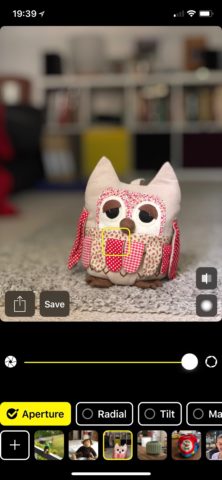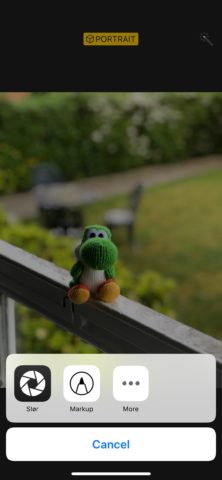Developer: Tobias Due Munk
Price: $4/£4
Size: 23.7 MB
Version: 1.2.3
Platform: iPhone & iPad
Update! We reviewed Slør in May 2018. Since then it’s only been updated three times, with minimal changes. Its rivals haven’t stood still, however.
So what’s new? There have been no big new features added since we first reviewed the app. There have just been a few fixes and tweaks, as well as fresh localization for Turkish and Italian audiences. That’s a bit of an issue when you consider that rival Focos has continued to expand and improve – most significantly with a machine learning update that allows even single-lens iPhone users to control depth of field. If you have a relatively new iPhone, you also have a built-in depth adjustment function, which restricts Slør’s usefulness to older devices. Without a big update prior to the next iPhone release, this app is in danger of becoming obsolete – but for certain use cases it’s still your best option.
Revised rating: Slør has been outflanked by its rivals. ★★★½
—–
Our original review, written in May 2018, is presented in its entirety below.
Portrait mode has grown to become one of the best iOS features of recent years, enabling those with a dual-camera iPhone to create bokeh-rich close-up photos.
Somewhat curiously, while Portrait mode lets you change the lighting of your shot after it has been taken, it doesn’t provide the ability to fine-tune the depth-of-field effect itself. That’s where Slør comes in.

Move the yellow box to preview the basic effect
Upon booting it up, Slør will instantly present you with your most recent Portrait shot, with a scrolling carousel of thumbnails providing sequential access to the rest below.
Flipping the virtual switch to the right will turn the Portrait mode effect on and off, which is a great way of seeing exactly what’s being done. The button below this shows you a heat map of the various depth layers present in the picture – an effect that can also be previewed by 3D Touching the image.

A heat map of the different depth layers
However, the most immediately magical effect comes from touching and dragging the little yellow viewfinder box around the screen. This will cause the image to ‘refocus’ that particular section, drawing out all available visual data.
It’s worth emphasizing that this effect is limited by the data present in the original shot, so your subject will always be in perfect focus, and you’re never going to be able to pull the extreme background into full clarity.

The difference between the full Portrait Mode effect…
Where Slør comes in handy is in pulling out those small details in the intermediate layers. Besides the default Aperture setting, you can adjust the depth effect within an adjustable Radial circle, or set the focal plane of the effect with Tilt for that tilt-shift effect. Macro, meanwhile, creates that super-close-up effect by blurring each individual background layer more aggressively – though we found this to be the least natural-looking effect.
Each individual effect can be fine-tuned with a slider or three. They can also be combined, although as they’re all utilizing the same nine layers of depth data, you’ll find that they soon start canceling one another out.

…and bringing the background detail out with Slør
It’s a shame that this potent tool sits separately from Photos and the camera app, but it’s still incredibly slick and easy to use. You can also hop straight into it directly from a Portrait shot in Photos thanks to the app’s iOS extension.
Saving your edits, meanwhile, will modify the source image in Photos rather than creating an endless stream of copies. That might sound a little precarious, but the underlying depth data is still retained, so you can always jump back into Slør and change things up again.

An extension lets you jump straight to Slør from Photos
All in all, this is a handsome, intuitive and powerful way to fine-tune your Portrait mode snaps. What’s more, one suspects it will only get more effective and nuanced as Apple’s camera technology improves.

